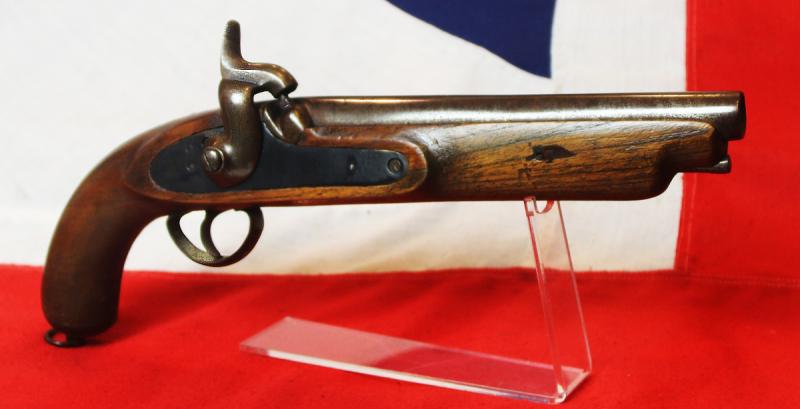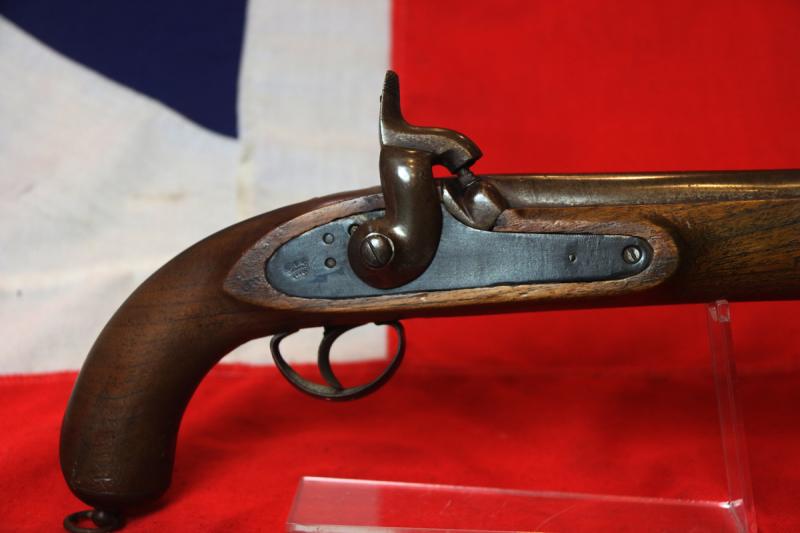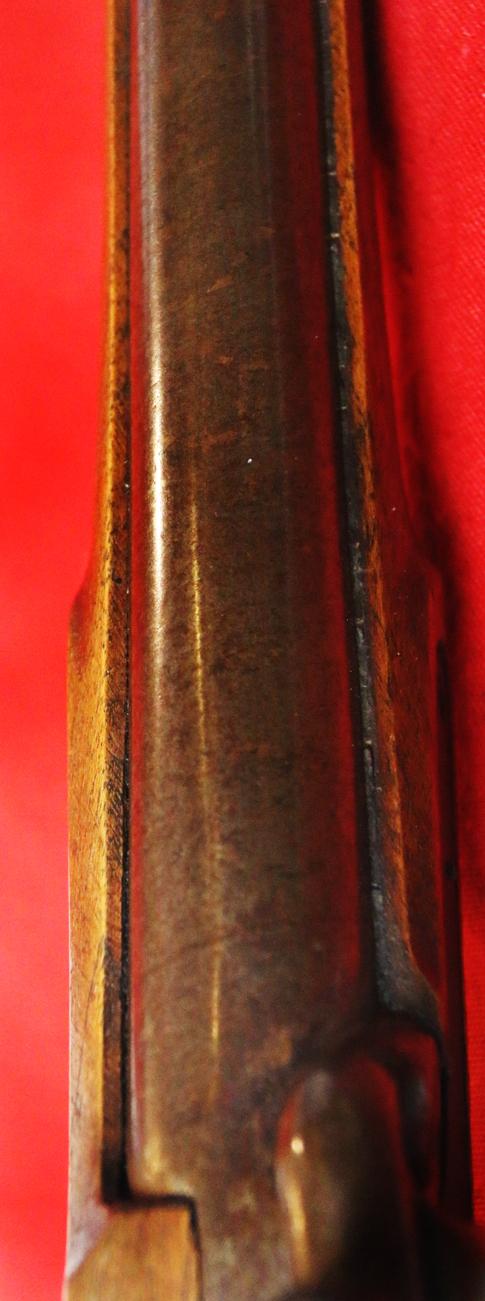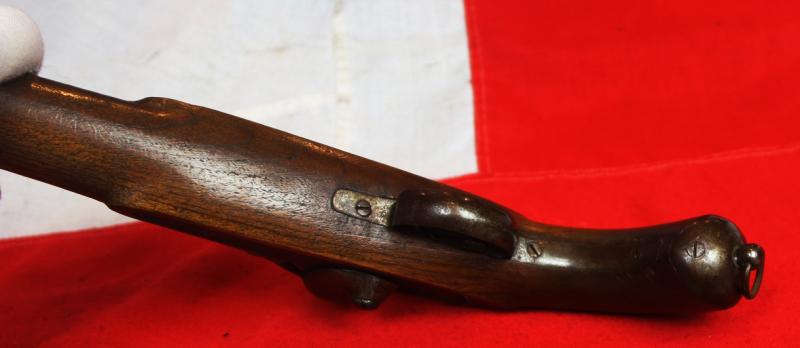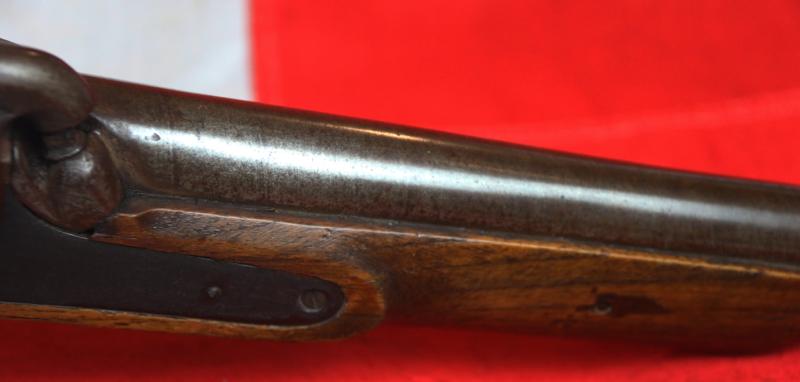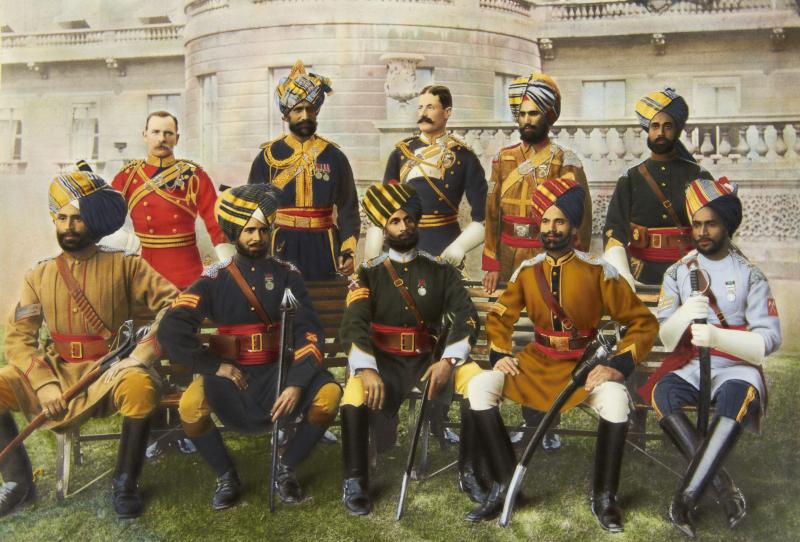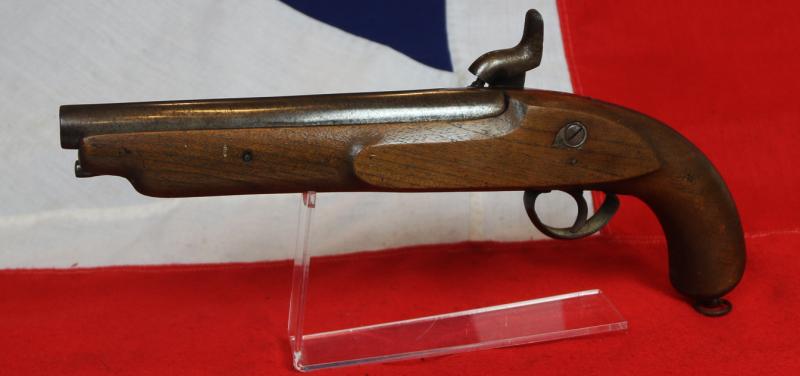A 19th Century Indian Raj Period Percussion Cavalry Horse Pistol, With Damascus Twist Steel Barrel, Thus Likely For An Officer, Such as, a Risaldar/Subedar, or Risaldar Major of The Punjab Irregular Cavalry
Good walnut stock, Damascus twist barrel, percussion action lock, with government Victorian crown stamp, iron mounts including trigger guard and butt cap with lanyard ring.
Pistols of this form were mounted in pairs, each within a single saddle holster, in leg o’mutton form, fixed and hanging either side of the saddle’s pommel. These holsters were known as *saddle buckets, long before the term saddle holster was used to describe leather receptacles to carry pistols when on horseback.{see picture 10 in the gallery}.
Subedar/Risaldar or subadar was the second-highest rank of Indian officer in the military forces of British India, ranking below "British Commissioned Officers" and above "Local Non-Commissioned Officers". Indian officers were promoted to this rank on the basis of both lengths of service and individual merit.
Under British rule, a Risaldar was the cavalry equivalent of a Subedar. A Subedar / Risaldar was ranked senior to a Jemadar and junior to a Subedar Major / Risaldar Major in an infantry / cavalry regiment of the Indian Army. Both Subedars and Risaldars wore two stars as rank insignia.
In photo 8 in the gallery one can see regimental officers, subedars and subedar majors of the British Indian Army Cavalry. Note the magnificence of their stunning uniforms, a mixture of Sikh and British traditional uniform dress of the time.
After the First Sikh War of 1845-46 the fighting qualities of the Sikhs impressed the British so much that in 1846 the first two regiments of Sikh infantry were raised at Ferozepore and Ludhiana. In the same year a frontier brigade was raised to police the frontier comprising the Corps of Guides and four more infantry regiments of Sikhs.
After the Second Sikh War of 1848-49 the Punjab was annexed, bringing the British into contact with the Pathan tribes of the North-West Frontier. This led to the formation of what later became the Punjab Frontier Force, comprising the Frontier Brigade raised in 1846, five regiments of Punjab Irregular cavalry and 6 regiments of Punjab irregular infantry. From 1851 to 1865 the regiments were titled Punjab Irregular Force abbreviated to PIF so that they were nick-named Piffers, a word that continued in use up to 1947.
Each regiment had 4 squadrons, and so that the the religious/ethnic groups were clearly defined, each squadron, or half-squadron, consisted of one type only. The types found in the 5 regiments were Sikhs, Dogras, Hindustani Mulims, Hindustani Hindus, Punjabi Muslims and Pathans.
*See the last picture in the gallery that shows how saddle pistol buckets were mounted upon cavalry saddles.
Just one of the greatly respected Risaldar-Majors of the time was the great Sirdar Bahadur Risaldar-Major Mani Singh who was born in Gujranwala in the Punjab. He was the first and most famous Indian officer who served in Hodson's Horse, an irregular cavalry regiment of the British Indian army formed during the Indian Rebellion of 1857-8. During the First Sikh War of 1845-6, Mani Singh was a cavalry officer in the Sikh army fighting the British. In 1852 he enlisted as a mounted policeman in Neville Chamberlain's Punjab Police. In 1857 he was asked to raise recruits to form Hodson's Horse. He served with the British throughout the Siege of Delhi, a key event of the Indian Rebellion in which Indian troops rose up against British colonial rule. During the Battle of Nawabganj he was badly wounded having shown great bravery in action. He was awarded many of the highest decorations, including the Order of Merit 1st class, and the Order of British India 1st class. He retired from military serivce in 1877, and was subsequently made manager of the Darbar Sahib (Golden Temple) at Amritsar. His watercolour portrait, by Sydney Prior Hall, autographed in Urdu, was acquired by HRH Albert Edward, Prince of Wales, {later King Edward VIIth, It was one of the King's prized pieces and resides within the Royal Collection.
Small old re-stock for-end repair, very strong mainspring.
Code: 25100
595.00 GBP


